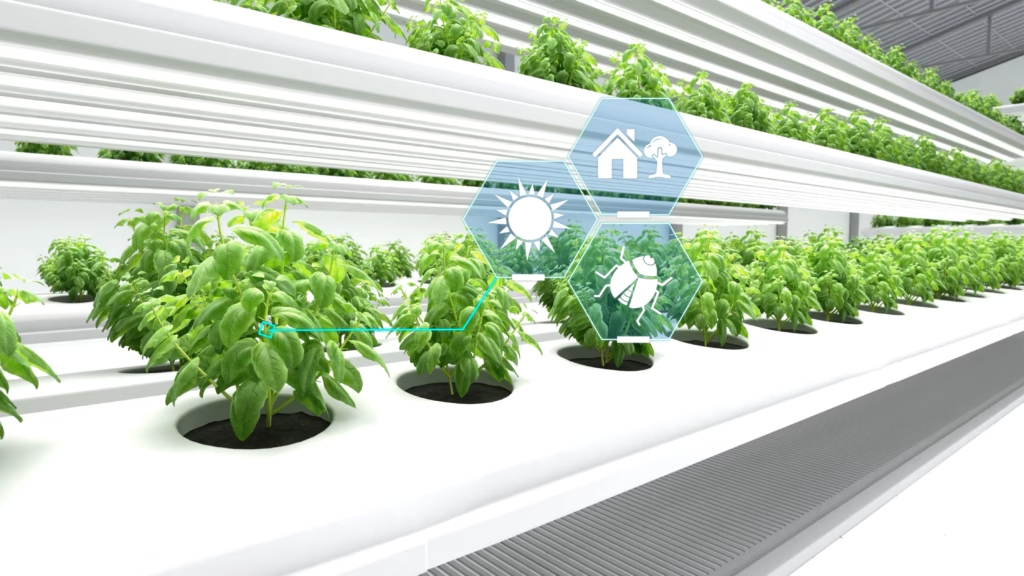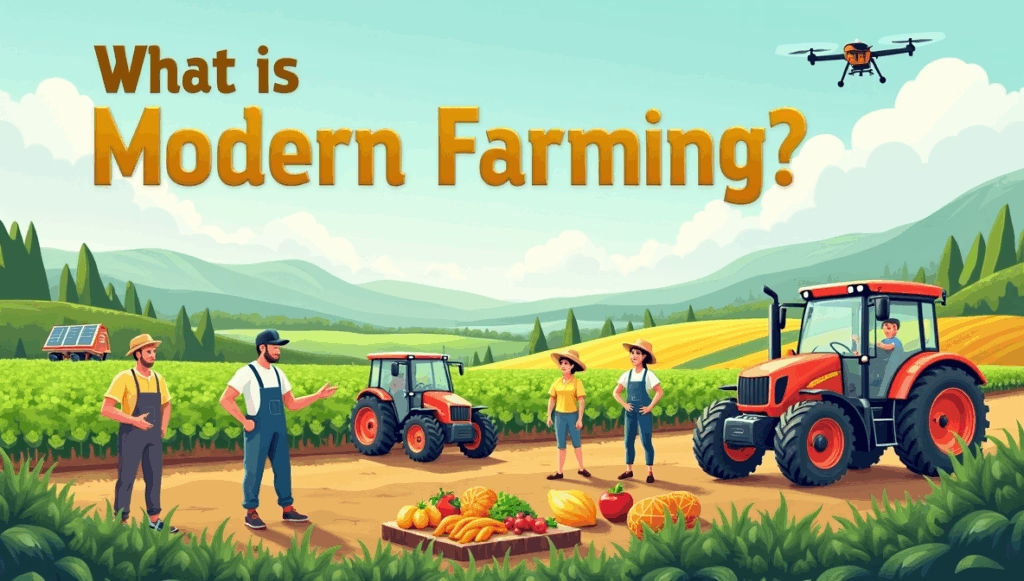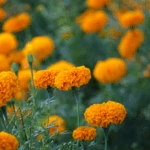Agriculture has always been the backbone of human civilization. From early subsistence farming to today’s modern farming methods of agriculture, the sector has undergone a massive transformation. Farmers no longer depend solely on rainfall or manual tools; instead, they now use technology, smart irrigation, biotechnology, and precision tools to increase crop yield and efficiency.

In this guide, we will answer key questions like:
- What is modern farming?
- Which of the following is a modern farming method?
- What is the difference between traditional and modern farming?
By the end, you’ll understand how modern farming is shaping the future of food security worldwide.
What is Modern Farming?
Modern farming refers to the use of advanced techniques, scientific approaches, and technology to grow crops efficiently and sustainably. Unlike traditional farming, which relied heavily on natural resources, modern farming focuses on maximizing yield, minimizing waste, and ensuring food security.
According to the Food and Agriculture Organization (FAO), global food demand will increase by 60% by 2050, and modern farming techniques will play a vital role in meeting this demand.
Some features of modern farming include:
- Use of High-Yielding Varieties (HYV) seeds.
- Mechanization with tractors, harvesters, and drones.
- Efficient irrigation systems such as drip and sprinkler methods.
- Biotechnology and genetically modified (GM) crops.
- Smart farming tools powered by AI, IoT, and GPS.
Which of the Following is a Modern Farming Method?
Modern agriculture uses diverse methods to improve efficiency. Some major modern farming methods of agriculture include:
- High-Yielding Seeds & Hybrid Varieties – Developed to maximize crop production. (ICAR – Indian Council of Agricultural Research)
- Mechanized Farming – Use of machinery for plowing, sowing, harvesting, and storage.
- Smart Irrigation – Drip and sprinkler irrigation save up to 50% of water compared to traditional methods. (USDA Irrigation Guide)
- Hydroponics & Aeroponics – Growing plants without soil.
- Greenhouse Farming – Cultivating crops in controlled environments.
- Precision Agriculture – Using drones, AI, and GPS to monitor soil, weather, and crop health.
- Vertical Farming – Growing crops in stacked layers, ideal for urban areas.
Read more about sustainable urban farming here: Hydroponic Farming in USA – A Beginner’s Guide.
Modern Farming Methods of Agriculture
Here’s a deeper look into specific modern farming techniques:
1. Crop Rotation & Diversification
Rotating crops improves soil fertility and prevents pests.
2. Smart Irrigation
Drip and sprinkler systems provide precise water delivery.
3. Biotechnology & GM Crops
Genetically modified crops resist pests and adapt to climate change. (WHO on GM Foods)
4. Organic Farming with Technology
Combining traditional organic methods with technology to improve soil health.
5. Integrated Pest Management (IPM)
Biological pest control reduces dependency on harmful pesticides. (EPA on IPM)
6. Smart Sensors & IoT
Farmers now use sensors to track soil moisture, crop health, and weather conditions in real time.
For Indian gardeners, check out Best Plants for Home Garden – Top Choices for Indian Homes.
Difference Between Traditional and Modern Farming
A frequently searched question is: “What is the difference between traditional farming and modern farming?”
Here’s a quick comparison:
| Factor | Traditional Farming | Modern Farming |
|---|---|---|
| Tools & Methods | Manual tools, animal labor | Tractors, drones, AI, machines |
| Seeds | Local varieties | Hybrid, HYV, GM seeds |
| Fertilizers | Manure, compost | Chemical fertilizers, bio-fertilizers |
| Watering | Rain-fed irrigation | Drip, sprinkler, smart irrigation |
| Yield | Low | High |
| Sustainability | Natural but less efficient | Efficient, needs balance |
This is a common topic in academics, especially in Class 9 agriculture studies (reference: NCERT Agriculture Notes).
Benefits of Modern Farming
- Higher Yield: More food produced per acre.
- Time-Saving: Machines reduce manual labor.
- Water Conservation: Smart irrigation saves water.
- Pest Resistance: GM crops fight pests effectively.
- Global Food Security: Helps meet population demands.
- Economic Growth: Improves farmers’ income. (World Bank Agriculture Report)
Want to grow your own food at home? Explore Sustainable Farming in Canada.
Challenges in Modern Farming
While modern farming has many advantages, it also comes with challenges:
- Soil Degradation due to excessive chemical use.
- High Costs of machinery and technology.
- Environmental Concerns related to pesticide usage.
- Skill Gaps – Farmers need training to use modern tools.
FAQs on Modern Farming
Q1. What is modern farming?
It is the use of technology, smart irrigation, biotechnology, and mechanization to increase crop productivity and sustainability.
Q2. Which of the following is a modern farming method?
Examples: Hydroponics, drip irrigation, greenhouse farming, precision agriculture.
Q3. Difference between traditional farming and modern farming?
Traditional farming relies on manual labor and natural resources, while modern farming uses technology, machinery, and science to improve yield.
Q4. Is modern farming sustainable?
Yes, when combined with eco-friendly methods like crop rotation, IPM, and precision agriculture.
For eco-conscious gardeners, read Organic Vegetable Seeds for Balcony Garden in India.
Conclusion
Modern farming is the backbone of future food production. It blends science, technology, and sustainable practices to ensure higher yields and improved farmer income. While it comes with challenges, the benefits far outweigh the drawbacks.
By combining traditional wisdom with modern techniques, farmers can secure food for future generations.
Visit Agzora to explore farming insights, seeds, and gardening solutions to make your agriculture journey smarter and more sustainable.






